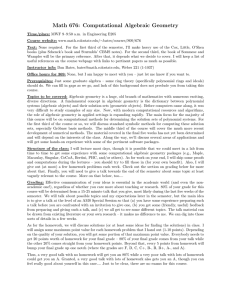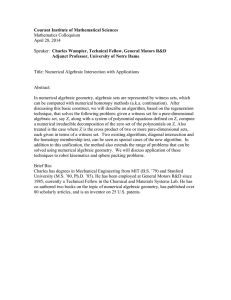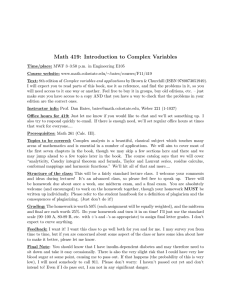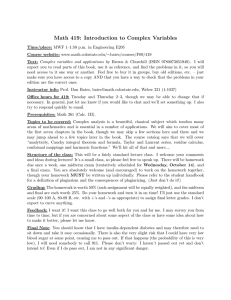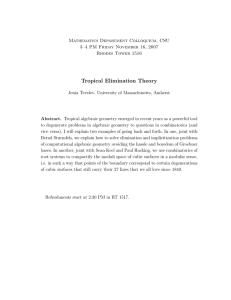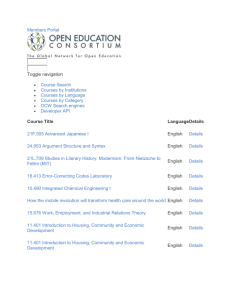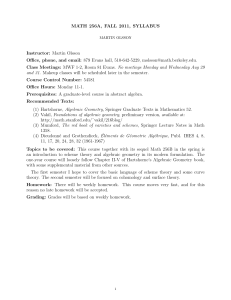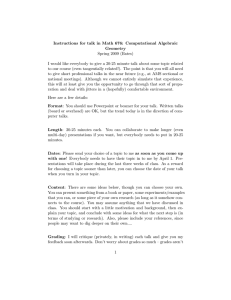Math 676: Numerical Algebraic Geometry Fall 2012
advertisement
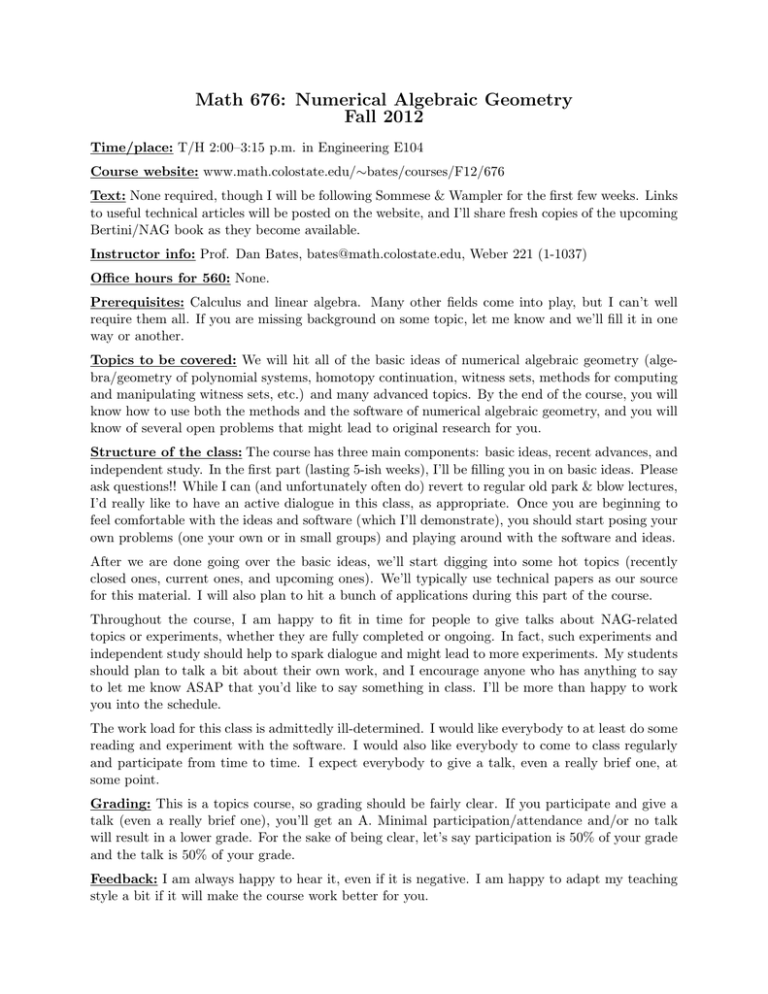
Math 676: Numerical Algebraic Geometry Fall 2012 Time/place: T/H 2:00–3:15 p.m. in Engineering E104 Course website: www.math.colostate.edu/∼bates/courses/F12/676 Text: None required, though I will be following Sommese & Wampler for the first few weeks. Links to useful technical articles will be posted on the website, and I’ll share fresh copies of the upcoming Bertini/NAG book as they become available. Instructor info: Prof. Dan Bates, bates@math.colostate.edu, Weber 221 (1-1037) Office hours for 560: None. Prerequisites: Calculus and linear algebra. Many other fields come into play, but I can’t well require them all. If you are missing background on some topic, let me know and we’ll fill it in one way or another. Topics to be covered: We will hit all of the basic ideas of numerical algebraic geometry (algebra/geometry of polynomial systems, homotopy continuation, witness sets, methods for computing and manipulating witness sets, etc.) and many advanced topics. By the end of the course, you will know how to use both the methods and the software of numerical algebraic geometry, and you will know of several open problems that might lead to original research for you. Structure of the class: The course has three main components: basic ideas, recent advances, and independent study. In the first part (lasting 5-ish weeks), I’ll be filling you in on basic ideas. Please ask questions!! While I can (and unfortunately often do) revert to regular old park & blow lectures, I’d really like to have an active dialogue in this class, as appropriate. Once you are beginning to feel comfortable with the ideas and software (which I’ll demonstrate), you should start posing your own problems (one your own or in small groups) and playing around with the software and ideas. After we are done going over the basic ideas, we’ll start digging into some hot topics (recently closed ones, current ones, and upcoming ones). We’ll typically use technical papers as our source for this material. I will also plan to hit a bunch of applications during this part of the course. Throughout the course, I am happy to fit in time for people to give talks about NAG-related topics or experiments, whether they are fully completed or ongoing. In fact, such experiments and independent study should help to spark dialogue and might lead to more experiments. My students should plan to talk a bit about their own work, and I encourage anyone who has anything to say to let me know ASAP that you’d like to say something in class. I’ll be more than happy to work you into the schedule. The work load for this class is admittedly ill-determined. I would like everybody to at least do some reading and experiment with the software. I would also like everybody to come to class regularly and participate from time to time. I expect everybody to give a talk, even a really brief one, at some point. Grading: This is a topics course, so grading should be fairly clear. If you participate and give a talk (even a really brief one), you’ll get an A. Minimal participation/attendance and/or no talk will result in a lower grade. For the sake of being clear, let’s say participation is 50% of your grade and the talk is 50% of your grade. Feedback: I am always happy to hear it, even if it is negative. I am happy to adapt my teaching style a bit if it will make the course work better for you. Final Note: You should know that I have insulin-dependent diabetes and may therefore need to sit down and take it easy occasionally. There is also the very slight risk that I could have very low blood sugar at some point, causing me to pass out. If that happens (the probability of this is very low), I will need somebody to call 911. Please don’t worry: I haven’t passed out yet and don’t intend to! Even if I do pass out, I am not in any significant danger.
